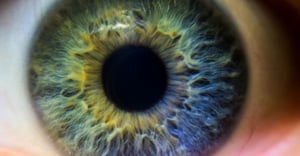Our eyes. They are the window to the world.
They help us process new information, absorb and appreciate things of beauty, and take in the colorful world around us.
Did you know the human eye can distinguish about 10 million colors? This remarkable sensory capacity makes our eyes one of the most fascinating organs. Yet, eye health issues are slowly becoming a concern as our world gets increasingly digital. Our eyes are constantly exposed to computers, cellphones, and other screens on a daily basis.
While vision problems in adults are rising, what’s more concerning is how screens and devices might impact the health of children’s eyes. In fact, according to the Centers for Disease Control and Prevention (CDC), over 6.8% of children under the age of 18 have a diagnosed vision disorder.
June is Child Vision Awareness Month. It was created to spread more awareness about eye diseases that can hinder children’s learning and social development.
Let’s Take a Step Back. How Do These Digital Devices Affect Our Eye Health?
Well…we can’t talk about this without mentioning blue light.
While blue light can be found in natural sunlight, it’s also emitted from laptops, computer monitors, smartphones, tablets, and TVs. The problem with the screens of most digital devices is that their light source – LEDs – have spectra that are very different from natural daylight: a combination of intense narrow-spectrum blue with less intense broadband yellow light. Here’s a helpful 101 on blue light and how it affects our eyes.

Image credit: E Ink
The human eye works to protect itself from harmful blue light, but excessive screen time with most types of digital devices can overwhelm our natural defenses. Now, imagine blue light’s impact on a child’s eyes? They are still growing and more fragile to the damage of blue light.
There Are Ways To Address the Issue. In Fact, This Small Step Might Help.
Digital devices keep us connected. They provide a channel for us to consume news and entertainment. They have also become an incredible learning tool for children, especially during the pandemic. Courses now occur online, and they can be as engaging as in-person classes. Teachers and parents interact on a digital platform to exchange ideas and collaborate on ways to improve children’s learning. There are many ways digital devices have made our lives easier. So, let’s face it, unplugging from this digital world is simply unrealistic.
One solution? Shift a portion of children’s screen time to devices that have less harmful blue light.
A recent study from Harvard School of Public Health found that devices with ePaper technology from E Ink are up to three times healthier for the eyes than LCD screens. E Ink’s ComfortGaze™ front light places less stress on retinal cells than LCD devices.

Image credit: E Ink.
Consider this as a healthier alternative: instead of reading on a computer screen, try an eNote or eReader. Tablets like the reMarkable also offer a paper-like experience. Whether reading, annotating, or drawing, it enables a distraction-free environment for children – no social media, ads, or notifications. These devices are purpose-built for learning and development.

Image credit: E Ink
Make taking care of your eyes a priority. After all, our eyes keep us safe and allow us to see the moving world around us more clearly.


Leave Comment